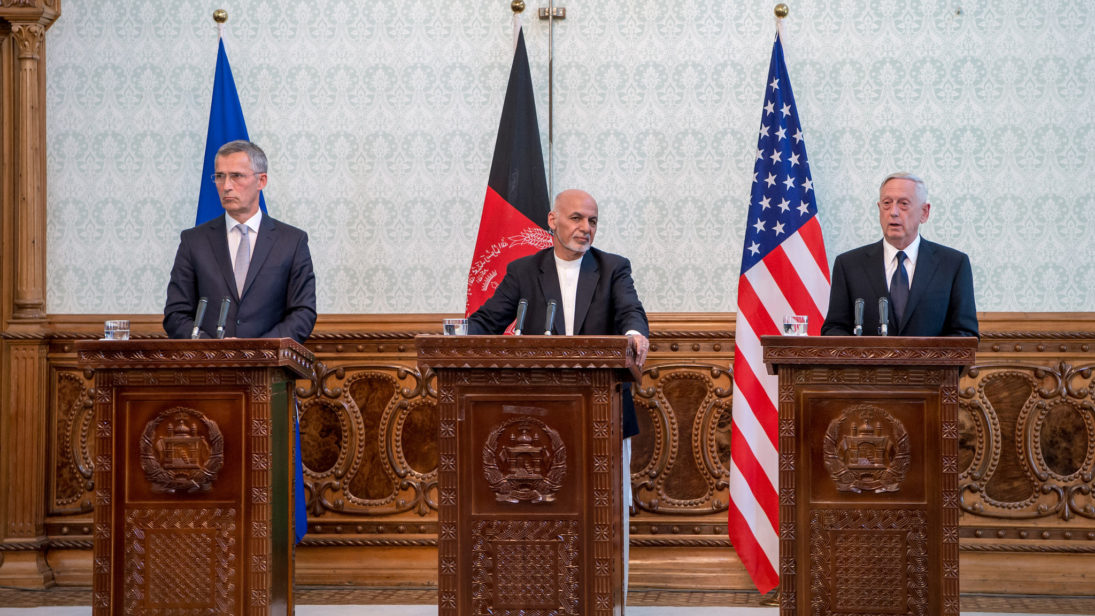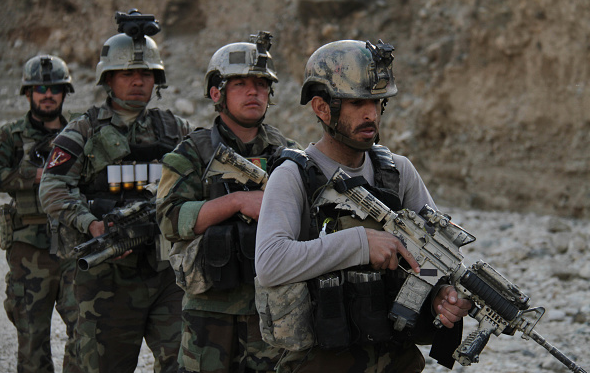
Though the winter months in Afghanistan have typically brought a lull to the fighting between U.S. forces and the Taliban, 2018 began with violence and bloodshed. On Saturday, January 27, an ambulance laden with explosives went off in a crowded area in Kabul, leaving over 100 killed and over 200 injured. In a statement, the Taliban called the massacre an act of reciprocity against the United States’ bullying and warned of more such attacks. Just one week prior, gunmen stormed the Intercontinental Hotel, a development that culminated in a 15-hour-long siege and the deaths of 43 people. In a separate statement on the hotel attack, the Taliban celebrated their success in afflicting heavy casualties on the United States, an occupying power, and Afghanistan.
These disruptive attacks foretell a continuation of 2017’s trend towards unprecedented levels of violence across Afghanistan. It also casts doubt on the promises made by the United States and Afghanistan to regain significant areas of territory currently held by the Taliban. In November of last year, General John Nicholson, Commander of U.S. Forces in Afghanistan, announced that Afghan and coalition forces will retake 80 percent of territory from the Taliban in the next two years. This is an incredibly difficult—perhaps impossible—task given that the Taliban controls or contests around 40 percent of the country. After almost two decades of heavy military engagement between the United States and its allies against the Taliban, the group is as strong as ever.
Despite this harrowing evidence, the Trump administration has continued to reinforce its hardline stance. In a statement released last week, the White House announced that terrorist safe havens in Afghanistan and Pakistan will be eliminated. But the administration’s flawed approach to Afghanistan is doomed to fail on account of three factors: its dependence on a military solution to the conflict, its misguided isolation of Pakistan, and its misidentification of the Taliban threat.
The Impossibility of a Military Solution
After sixteen years of fighting to eliminate the Taliban from Afghanistan, senior U.S. officials have begun to deem a military solution untenable, proposing instead that any endgame to U.S. presence in the country will involve a negotiated political solution with the Taliban. However, it is unclear where the White House stands on peace talks with the Taliban, as President Trump’s own statements appear to prioritize a military solution to the conflict over a negotiated settlement. In the new U.S. strategy for South Asia, announced in August of last year, Trump claimed the United States would defeat the Taliban and other militant groups in Afghanistan “handily.” This was immediately followed by the highest number of bombs dropped in Afghanistan in a single month since 2010. Yet, five months later, a military victory for U.S. and Afghan forces remains elusive.
Indeed, this is due to the impossibility of a military solution to the conflict in Afghanistan. History is the best evidence of this fact: the Taliban’s resurgence after their regime was toppled militarily in late 2001 and early 2002 is a testament to the fact that the military option cannot promise a lasting end to the group’s presence in Afghanistan. Nonetheless, after the recent attacks in Kabul, Trump rejected dialogue with the Taliban “for now.” However, even if certain high-level U.S. officials in the Departments of State and Defense are emphasizing a negotiated political settlement as the solution to Afghanistan, the conflict will persist as long as the executive branch favors a military option.

The Misguided Isolation of Pakistan
Further complicating matters, Trump also decided to suspend all U.S. military aid to Pakistan in December on the grounds that Islamabad has failed to take action against the Haqqani Network and Afghan Taliban militant groups. This antagonized Pakistani politicians and the military establishment, who retorted that the United States should not blame Pakistan for its failure in Afghanistan.
This relentless campaign by Afghanistan, the United States, and India to globally isolate Pakistan in an effort to influence its regional posturing is inherently flawed: isolating Pakistan is not the solution, for several reasons. Although Pakistan’s economic leverage over Afghanistan has weakened following the inauguration of the Chabahar port and Afghanistan’s growing economic ties with Central Asia as alternatives, it still has other strings it can pull. The most powerful of these, arguably, is its influence over the terrorist groups themselves. Many inside Afghanistan, including Afghan President Ashraf Ghani, believe that the recent attacks in Kabul were carried out by militants who were trained by Pakistan. With tensions between Pakistan and the United States running high, it is plausible that Islamabad may have utilized these terrorist groups to exert pressure on Afghanistan and its allies involved in this conflict. Even more leverage comes from the United States’ dependence on Pakistan for air and land routes for logistical transit, which Pakistan can block if it were ever to feel threatened. The number of Afghan refugees in Pakistan—around 1.4 million registered and around 1 million unregistered—is another bargaining chip that Pakistan has frequently used against Afghanistan, as the latter is currently unable to accommodate such a large number of repatriates. Recently, in reaction to suspension of military aid by the United States, Pakistan issued a thirty day notice for all Afghan refugees to leave Pakistan.
Finally, the isolation of Pakistan under the new U.S. strategy for South Asia has polarized regional alliances and weakened opportunities for regional cooperation to resolve the Afghanistan issue. The United States’ close ties with India and Afghanistan have strengthened the already strong relations between Pakistan and China. Pakistan has also steadily moved closer to Russia following the 2014 defense and military deal and the 2017 joint military exercise between the two countries. With China and Russia on its side, Pakistan can be more confident and resilient against pressures from the United States and its allies. This is contrary to the goal of the United States and its allies with respect to Afghanistan: security, an aim that requires regional consensus and cooperation.
Misidentifying the Taliban Threat
In light of the Kabul attacks, it is vital to understand that neither is the Taliban purely a terrorist group, nor is it an insurgency or a proxy group. With that in mind, it is necessary for all regional actors, including the United States and Pakistan, to address these three components of the Taliban. First, approaching the Taliban as a terrorist group, there is need for support and consensus-building among religious figures coupled with deradicalization measures within Afghanistan. Second, looking at the Taliban as an insurgent group, Afghanistan, Pakistan, the United States, and other regional stakeholders should pressure it to come to the negotiating table for peace talks. Third, addressing the Taliban as a proxy group, all regional actors—including Pakistan—must end any support to the group and cooperate to end terrorism in Afghanistan. The new U.S. strategy for Afghanistan fails to include or acknowledge these elements, and that is why it is likely to fail.
***
Image 1: James N. Mattis via Flickr
Image 2: NurPhoto via Getty


